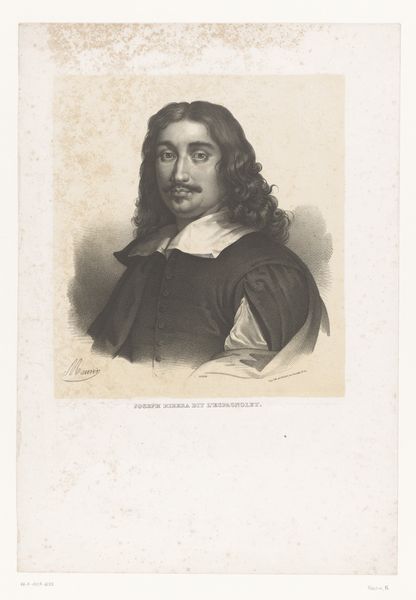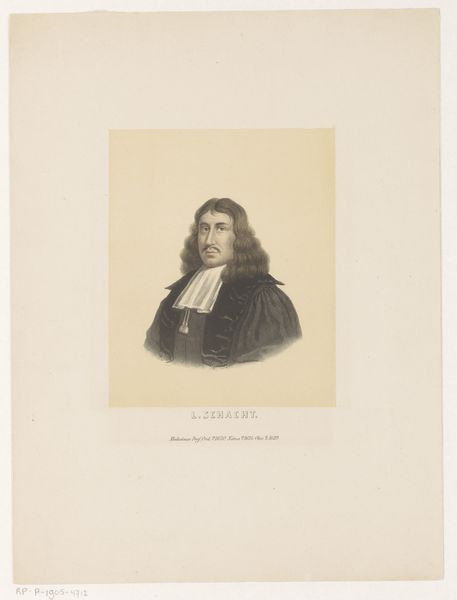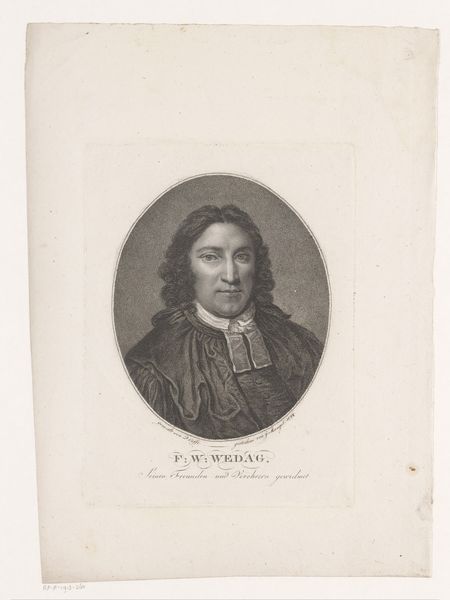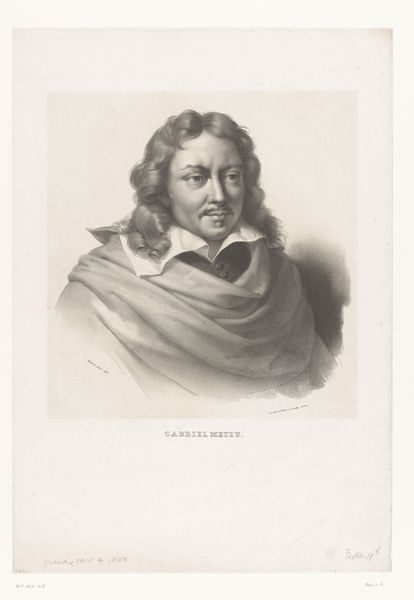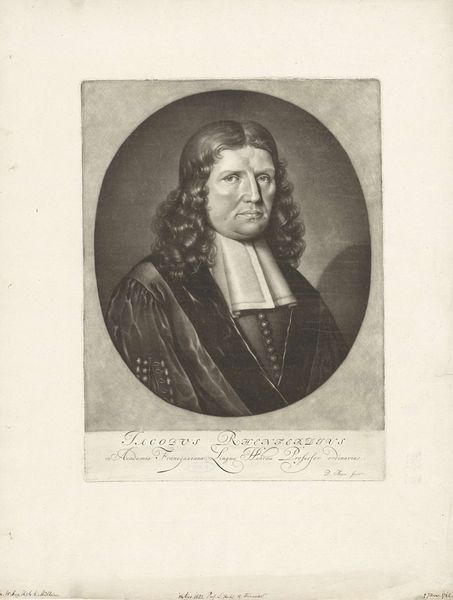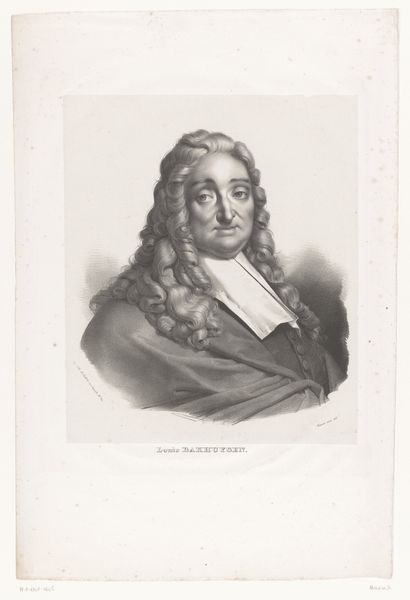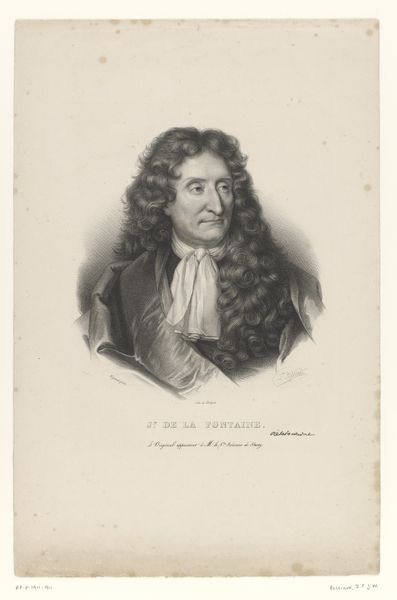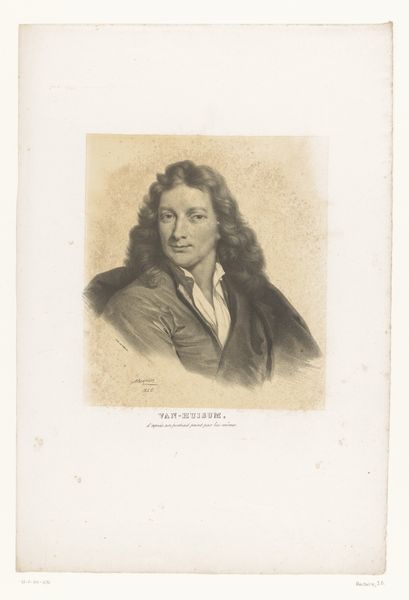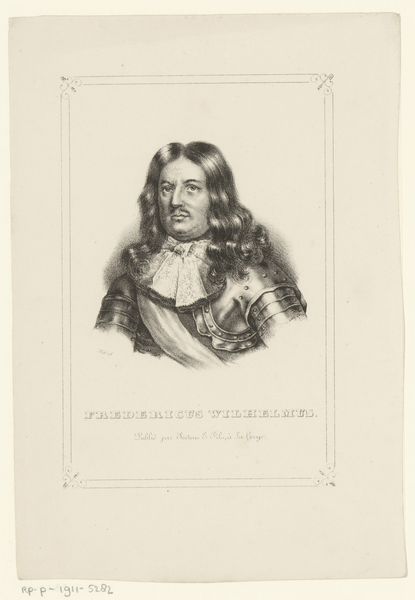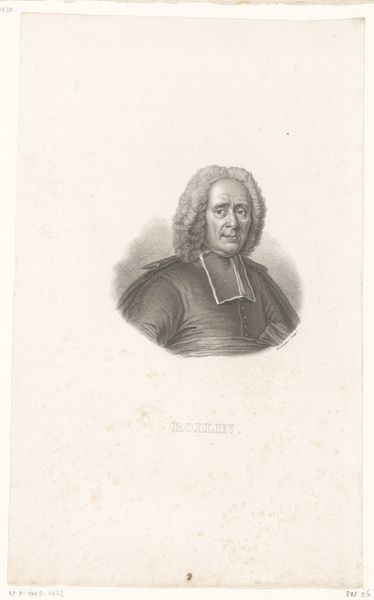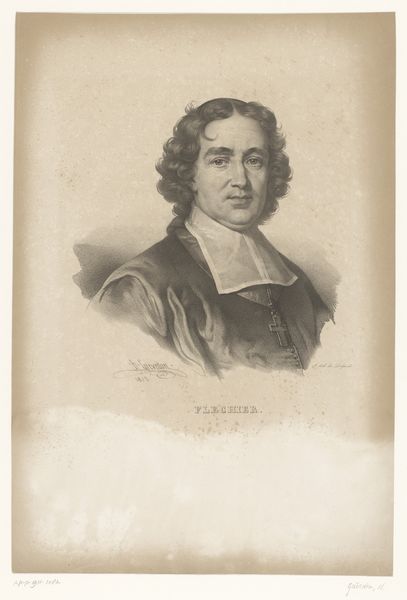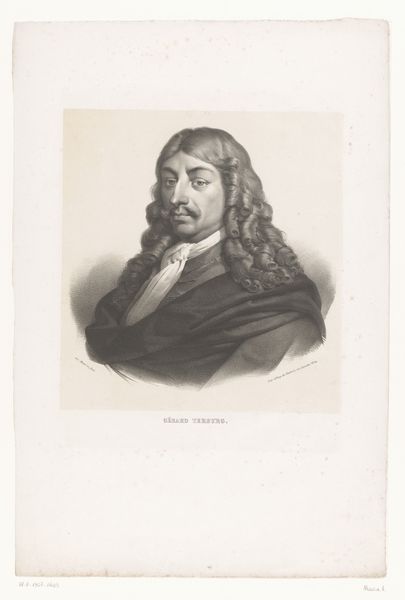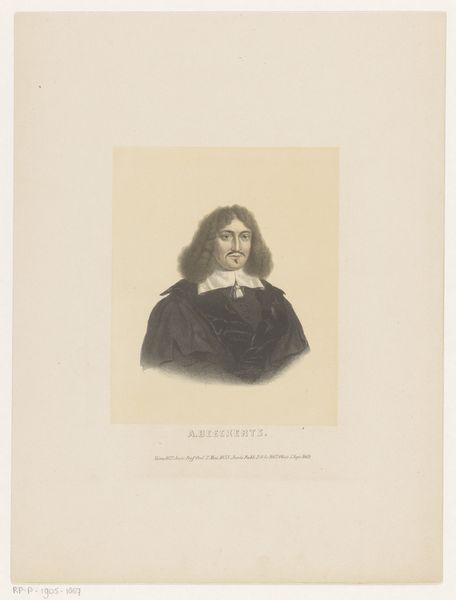
drawing, print, engraving
#
portrait
#
drawing
# print
#
engraving
#
realism
Dimensions: height 497 mm, width 340 mm
Copyright: Rijks Museum: Open Domain
Editor: Here we have Nicolas Maurin's "Portret van Bartholomeus van der Helst," a drawing that was printed as an engraving, dating roughly from 1826 to 1852. The contrast between the lace and the sitter's face really pulls me in. What elements stand out to you in this piece? Curator: The lithographic and engraving techniques allow for a striking play of light and shadow, emphasizing the textures within the image. Consider how the meticulous hatching defines the contours of the face and the folds of the clothing. Note also the delicate rendering of the lace collar – the density of lines creates an almost palpable sense of texture against the smoother areas of the face and hair. It exemplifies how artists manipulated the limitations of reproductive print media to simulate painterly effects, and that is central to this piece’s structure. Editor: So you are focusing on the techniques that imitate painting within a print. But isn't the success of a portrait also reliant on capturing a likeness? Curator: Likeness, representation; these are indeed qualities that resonate on some levels. But observe how the linear qualities create rhythm through the composition and unify various textures within the form. What could be described as mere resemblance actually emerges from the artist’s adept manipulation of the medium's inherent characteristics. Semiotically speaking, the codes within the portrait function foremost to explore possibilities latent within the printmaking form itself. Editor: So, you're suggesting the print isn't just trying to look like a painting; it's using those elements to create something entirely new based on what engraving and lithography are able to achieve on their own terms? Curator: Precisely. Through acute formal arrangement, Maurin transcends simple replication and manifests unique expression through structural relationships born of material possibility. Editor: I see it now; it is less about what is represented and more about how those realistic qualities are achieved with this print style, and what that emphasis communicates. Thanks for expanding my perspective!
Comments
No comments
Be the first to comment and join the conversation on the ultimate creative platform.
